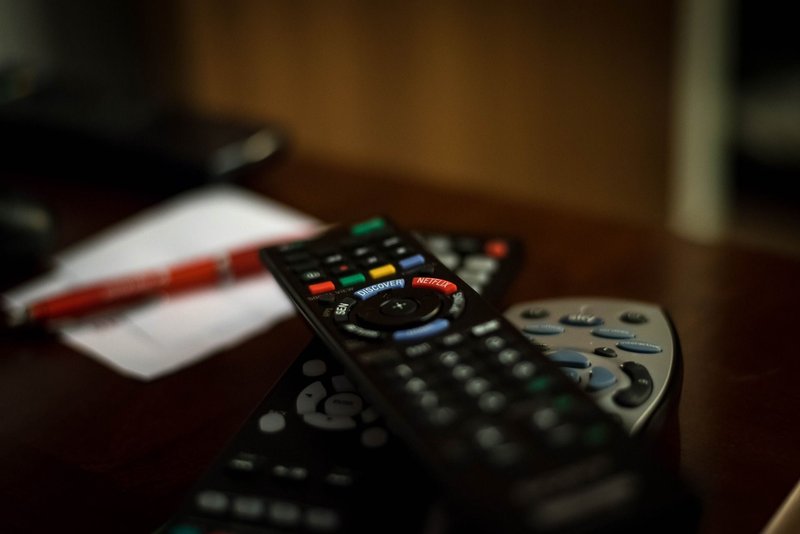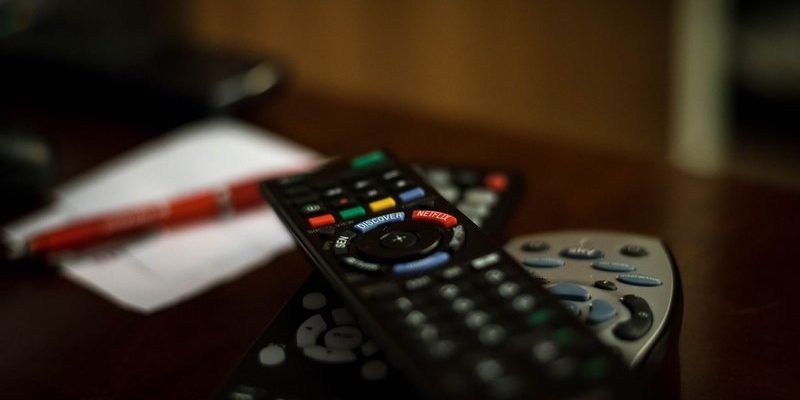
For those new to the brand: One For All makes those universal remotes you see in every electronics aisle. The idea is simple—ditch your pile of remotes and control everything with just one. Sounds great, right? But just as every smartphone freezes at the worst possible moment, universal remotes are famous for their quirks. Sometimes the remote doesn’t sync. Other times, it silently ignores your commands, or the batteries seem to drain overnight. If you’re nodding along, don’t worry—you’re not cursed, and you’re definitely not alone.
So, let’s roll up our sleeves, dig into the most common problems with One For All universal remotes, and—more importantly—see how you can fix them without losing your mind (or your remote down the couch cushions).
The Remote Won’t Pair or Sync With Your Device
You bring home your shiny new One For All universal remote, open the box, toss the manual on the coffee table, and get ready for instant TV domination. But then… nothing happens. The remote won’t pair. It just sits there like a stubborn cat. This is *the* classic scenario.
The heart of the problem is usually the sync process. Universal remotes need specific codes to communicate with your TV, soundbar, or Blu-ray player. Miss a step, or punch in the wrong code, and the remote stays silent. Honestly, I once tried the wrong code so many times my remote probably thought I was talking in Morse code.
To fix this, grab the manual (yes, that thing you tossed aside), and look up the right device code for your brand. If you’ve lost the manual (guilty as charged), One For All lists codes on their website. Enter pairing mode by holding down the setup button until the LED blinks, then type in the code. Don’t rush—most mistakes happen from double-pressing buttons or missing a step. If this still doesn’t work, try the “auto search” method, where the remote cycles through codes automatically until your device responds.
Pro tip: Always double-check the batteries before troubleshooting. Low power can mess up the pairing process.
If all else fails, perform a remote reset (more on that later). Nine times out of ten, starting from scratch does the trick.
Buttons Aren’t Responding or Only Work Intermittently
Ever find yourself jabbing the volume button five times, only to have the remote suddenly blast you with sound? Or maybe half the buttons respond while the rest ignore you like an old friend at a crowded party. This is surprisingly common with One For All remotes and can make anyone feel like they’re losing their mind.
Most often, this boils down to either dying batteries or dirty contacts inside the remote. Batteries first: weak batteries send inconsistent signals, causing buttons to barely work or behave unpredictably. Replace old batteries with fresh, high-quality ones and see if the issue clears up. It’s almost embarrassing how often this simple step solves everything.
If new batteries don’t help, the culprit might be grime under the buttons. After months (or years) of popcorn fingers and sticky hands, remotes need a little spa treatment. Gently open the remote (use a small screwdriver), then wipe the contact pads and buttons with a soft cloth or a cotton swab dipped in rubbing alcohol. Be patient and take your time putting it back together—forcing parts can break the case.
Personal story: I once fixed a “dead” remote for my neighbor just by swapping in new batteries. She brought cookies as a thank you. Win-win.
The Remote Keeps Losing Its Programming
Here’s the thing: nothing’s more annoying than programming your universal remote perfectly, only for it to forget everything after a few days. You go through the code entry, it works, and then *poof*—as if it’s developed amnesia overnight.
This usually happens when the remote’s batteries get too weak or are removed for too long. Some One For All models store codes in temporary memory, relying on the battery’s juice to hang onto your programming. Other times, there could be a glitch in the remote’s internal chip.
To avoid this headache, always swap batteries one at a time—never pull them both out together unless you want to start the code-entry dance all over again. If your remote keeps forgetting settings, consider a fresh set of name-brand batteries so your commands stick. If the issue persists, check if your model has a “persistent memory” feature in the manual (or online PDF). Some remotes let you back up your settings, which is a real sanity-saver.
Helpful insight: Write down your device codes somewhere safe. It’s less stressful when you need to reprogram quickly!
Signal Problems: The Remote Works Only Up Close
Imagine you’re halfway across the living room, arms full of snacks, and you try to pause your show—but the One For All remote only works if you’re practically on top of the TV. So much for “universal” control, right?
Short-range or spotty signals are usually caused by weak batteries, blocked signals, or (sometimes) interference from other electronic gadgets. First, replace the batteries to rule this out. Still no luck? Make sure there’s a clear “line of sight” from the remote to the device sensor. Even a glass cabinet door can mess with the remote’s infrared beam.
If you’ve got lots of devices like WiFi routers or smart speakers nearby, try moving them away or turning them off briefly. Electronics can create interference that confuses infrared signals. Also, double-check that nothing’s covering the IR emitter on the front of your remote—a single greasy fingerprint can be surprisingly effective at blocking signals.
Don’t want to get off the couch? Sometimes tilting or pointing the remote slightly differently helps the signal find its mark.
Trouble With Device Codes and Manual Entry
One For All remotes rely on codes for every TV, streaming stick, or sound system you own. The trick? Finding the right one. Honestly, hunting for that *one* working code can feel like scrolling through endless streaming menus—so many choices, yet nothing seems to work.
If your device code isn’t listed in the manual, don’t panic. Head to the One For All website and search by device brand and model. Sometimes newer gadgets aren’t in the printed manual, but online databases update faster. When entering codes manually, go slow—if a code is entered incorrectly, just try the next on the list. It’s tedious, sure, but persistence pays off.
There’s also the “auto search” feature on many remotes. Hold down the setup button, let the remote cycle through codes, and press “OK” when your device responds (like the TV turns off or the volume changes). This can take a few minutes, but it’s a lifesaver when you don’t know the right code offhand.
Insider tip: Keep your device model number handy. It speeds up finding the right code online or with customer support.
The Remote Needs a Full Reset
When all else fails, sometimes you just have to hit the reset button. Literally. Just like when your computer freezes, resetting your One For All remote often wipes out gremlins hiding in the circuitry.
To do a reset, check the manual for the right key combination (usually holding setup plus a number key). This erases all programming, so you’ll have to re-enter your device codes. If your remote is behaving strangely—maybe random buttons stop working, or codes won’t stick—a reset gives you a clean slate.
Resets are a great fix if you’ve tried everything else: new batteries, cleaning, re-syncing, and nothing works. But don’t jump to this step unless you’re really stuck—it wipes out everything you’ve programmed, so back up your codes first if possible.
One last reminder: Resetting is like moving to a new apartment. You’ll have to set everything up again from scratch, but the fresh start is usually worth it.
Universal vs. Brand-Specific Remotes: Is It Really Better?
You might be wondering, “Why bother with a universal remote at all? Wouldn’t the original remote work better?” Here’s the honest answer: it depends. One For All remotes are a lifesaver if you have way too many devices or lost the originals (hello, hand-me-down TVs!). But they can’t always access all the fancy features. For basic controls—volume, channels, power—they’re perfect. For weird menu stuff or smart home integrations, sometimes the original remote wins.
Brand-specific remotes are usually optimized for just one device. So when you want to dig into TV settings, they’re smoother. But then you’re juggling three or four remotes again. With One For All, everything’s streamlined—but only if you get the programming and syncing right. The choice really comes down to whether you want convenience or complete compatibility.
How To Make Troubleshooting Easier Next Time
Let me explain something that took me way too long to learn: keeping your remote drama-free isn’t just about fixing things when they break. Sometimes it’s about being a little proactive.
- Keep fresh batteries on hand. Weak batteries can cause half the weird issues people blame on “broken” remotes.
- Clean your remote regularly. Wipe down the buttons every month or so, especially if you’re a snack-on-the-couch type.
- Write down your device codes. Store them with receipts or in your phone’s notes app for easy access.
- Bookmark the One For All support site. Their code database and troubleshooting guides are surprisingly helpful when you’re stuck.
A little preparation means next time your universal remote acts up, you’ll spend less time cursing and more time lounging.
Wrapping It All Up
So, there you have it—the most common problems with One For All universal remotes, and the straightforward fixes that actually work. From stubborn pairing issues to mysterious code forgetfulness, every challenge has a solution if you know what to look for. Sometimes it’s as easy as swapping batteries; other times, you’ll need a little patience (and maybe a cookie as a reward). Universal remotes are supposed to make your life easier, but it helps to know a few tricks along the way. Keep your codes handy, stay calm, and remember: even when the remote feels “out of control,” you definitely aren’t.
